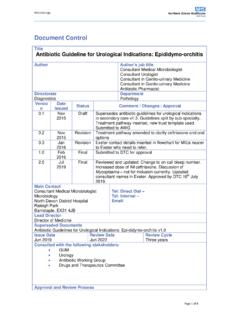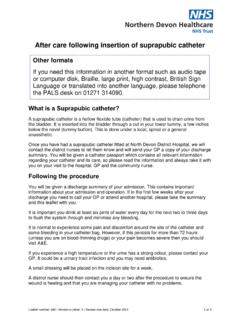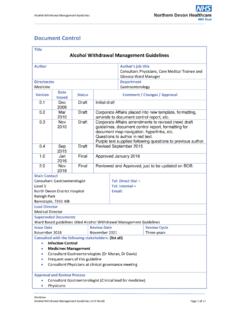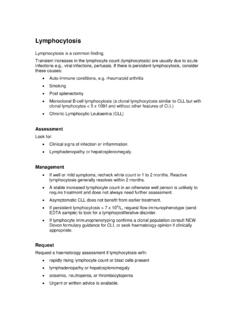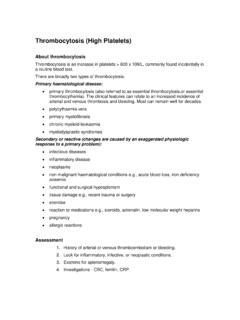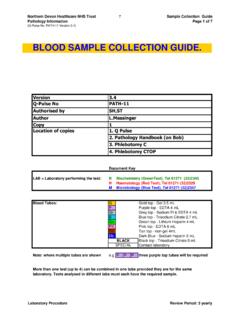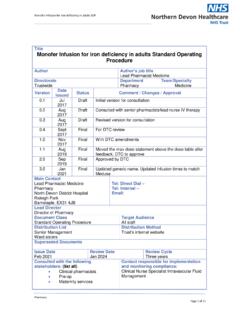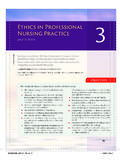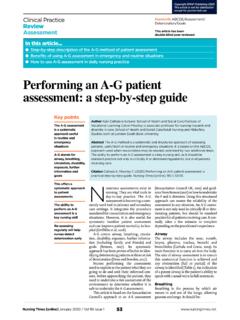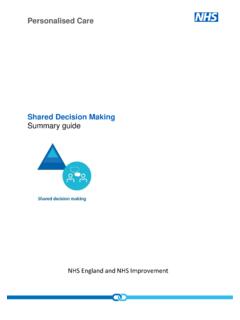Transcription of Guidelines for High Flow Oxygen Therapy (AIRVO²) on the …
1 Guidelines for High Flow Oxygen Therapy (AIRVO ) on the Wards Title Guidelines for High Flow Oxygen Therapy (AIRVO ) on the Wards Author Author's job title Advanced Practitioner Respiratory Physiotherapist Directorate Department Clinical support Services Physiotherapy Date Version Status Comment / Changes / Approval Issued May Draft Initial version for consultation 2017. June Final Approved at Therapy Managers Meeting 2017. Aug Revision Fire safety and Oxygen enriched environments information 2019 added (section ). Main Contact Advanced Practitioner Respiratory Tel: Direct Dial.
2 Physiotherapist Tel: Internal . North Devon District Hospital Email: Raleigh Park Barnstaple, EX31 4JB. Lead Director Director of Nursing Superseded Documents Issue Date Review Date Review Cycle June 2017 Jun 2020 Three years Consulted with the following stakeholders: Therapy respiratory specialist group. Senior nurse forum. EBME. Respiratory consultants ICU clinical nurse educator Approval and Review Process Therapy respiratory specialist group. Respiratory Consultants ICU clinical nurse specialist Final approval by Therapy Service Leads Meeting Local Path G:\Physio Secure\Protocols and SOPs\.
3 Filename Guidelines for High Flow Oxygen Therapy (AIRVO ) on the Wards Policy categories for Trust's internal Tags for Trust's internal website (Bob). website (Bob) AIRVO, Humidified, Oxygen Physiotherapy and Occupational Therapy Physiotherapy Page 1 of 11. Guidelines for High Flow Oxygen Therapy (AIRVO ) on the Wards CONTENTS. 1. Purpose .. 3. 2. Definitions .. 3. High Flow Nasal Therapy system .. 3. 3. Responsibilities .. 3. Role of Advanced Practitioner Respiratory Physiotherapist .. 3. Role of Respiratory Consultants and registrar .. 4. Role of Ward Manager .. 4. 4. Use of High Flow Oxygen on the wards.
4 4. Introduction .. 4. Indications .. 4. Contra-indications/ precautions (if in doubt seek medical advice) .. 5. Equipment .. 5. Setting patient up on the AIRVO .. 5. Adjusting 6. Monitoring patient .. 6. Cleaning of equipment .. 7. 5. Oxygen Enriched Environments and Fire Safety Risks .. 7. Introduction .. 7. Fire Safety 7. Oxygen Enrichment .. 7. Contaminants .. 7. Oxygen Therapy .. 7. Controls to manage fire and explosion 8. 6. Monitoring Compliance with and the Effectiveness of the Guideline .. 8. Standards/ Key Performance Indicators .. 8. Process for Implementation and Monitoring Compliance and 9.
5 Monitoring compliance with Guidelines .. 9. 7. References .. 9. 8. Associated Documentation .. 9. Physiotherapy Page 2 of 11. Guidelines for High Flow Oxygen Therapy (AIRVO ) on the Wards 1. Purpose The purpose of this document is to detail the process for clinical Guidelines for high flow Oxygen Therapy on the Medical Assessment Unit and Glossop Ward. This equipment should NOT be used on any other wards or for patients who are for escalation to Intensive care Unit (ICU). The policy applies to Physiotherapists, Nurses, Doctors and nursing associates. Implementation of this policy will ensure: Correct patient selection Safe use of High Flow Oxygen 2.
6 Definitions High Flow Nasal Therapy system System which delivers heated, humidified high flow Oxygen Therapy via nasal cannula or tracheostomy attachment. 3. Responsibilities Physiotherapists - physiotherapists with appropriate knowledge and training can select patients for this Therapy , set up the equipment, establish patients on the Therapy , make adjustments to the settings and wean the patient from the Therapy . Nursing Staff - all trained nurses responsible for a patient on this Therapy should have appropriate training to manage the machine, monitor patient and respond to any issues.
7 Nursing staff should be aware of patients Early Warning Score (EWS) and any escalation plans for that patient. Respiratory consultants and registrar- responsible for prescribing Oxygen and target saturations and making decisions re patient selection for this Therapy . Responsible for ensuring that the patient has an up to date Treatment Escalation Plan (TEP). Role of Advanced Practitioner Respiratory Physiotherapist The advanced practitioner respiratory specialist physiotherapist is responsible for: Ensuring correct patient selection. Ensuring adequate training for all physiotherapists that participate on the on-call rota.
8 Assist with training of ward nurses. Physiotherapy Page 3 of 11. Guidelines for High Flow Oxygen Therapy (AIRVO ) on the Wards Role of Respiratory Consultants and registrar The Respiratory consultants and registrar are responsible for: Prescribing Oxygen Therapy and contributing towards the decision to commence High Flow Nasal Therapy (HFNT). Ensuring that a valid TEP is in place before Therapy is commenced. If the patient is receiving HFNT for end of life symptom relief the respiratory consultant must discuss end of life in hospital with the patient and next of kin. Role of Ward Manager The ward manager is responsible for: Ensuring nursing staff receive training on the use of the AIRVO and monitoring of the patient whilst on the Therapy .
9 Ensuring only registered practitioners who have undergone specific training and achieved competency operate the AIRVO . 4. Use of High Flow Oxygen on the wards Introduction HFNT has become increasingly used for management of patients with type 1. respiratory failure. It delivers high inspiratory gas flow (up to 60 litres per minute), which is warmed and humidified. Oxygen can be titrated 21-95%. If Oxygen exceeds 95%, the Oxygen reading will pulse red and the device will alarm. Benefits include- Reversal of hypoxaemia Reduced work of breathing Improved secretion clearance Improved patient tolerance/ comfort Indications The Patient is a neck breather requiring Oxygen and/or not managing secretions with normal routine The Patient is requiring >60% Oxygen via venturi mask or non-rebreath mask.
10 The patient is requiring >35% Oxygen and has increased sputum viscosity with impaired ability to clear. Physiotherapy Page 4 of 11. Guidelines for High Flow Oxygen Therapy (AIRVO ) on the Wards The patient is for end of life care , AIRVO2 can be used for symptom relief. However, should be discontinued if the patient becomes unconscious or at patients request. A. discussion must be had by the respiratory consultant with the patient about end of life prior to commencing the AIRVO . Contra-indications/ precautions (if in doubt seek medical advice). patients with type 2 respiratory failure requiring Non-invasive ventilation (NIV).
